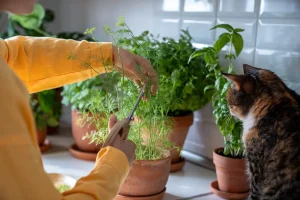
Children love watching pineapple isopods and their crustacean friends burrow, molt, and clean up leaves as classroom mascots and bedroom terrarium stars. These small land-dwelling “roly-polies” fit well into modern family life because they require little room, rarely escape, and offer hands-on science without allergies or bites. Kids learn responsibility, ecology by observation, and household sustainability while having fun with isopods that roll into defensive balls at the slightest tickling.
Starter Pets with Low Upkeep
Isopods thrive on benign neglect, but parents hate to add another task. Most species are satisfied with a shoebox with air vents, coco coir combined with organic soil, and pesticide-free leaf litter. Create a moisture gradient by misting one side of the habitat every several days, then add vegetable scraps or fish-flake pellets twice a week. These crustaceans cannot scale smooth plastic, so cleaning is as simple as lifting the lid, removing uneaten food, and topping up leaves monthly. The light task teaches kids regularity without overwhelming them.

Safe Interactive Handling Tips
Kids adore holding dogs, but safety comes first. No venom and robust exoskeletons make isopods suitable for cupped palms. Encourage kids to scoop animals rather than pinch, keeping fingers low over the enclosure to lightly land any falls. Short, supervised sessions observe antennae flicks and rolling without stress. Small magnifying glasses reveal segmented plates, compound eyes, and tiny uropods that propel reverse dashes without the scratches, dander, or loud noises of traditional fuzzy pets.
Built-In Science Lessons
Students can investigate animal behavior, nutrition cycle, and environmental tolerance theories in a colony. From question to conclusion, simple experiments like presenting several food varieties, moisture zones, or light exposure teach the scientific method. Children track counts, molting schedules, and population expansion, applying textbook theory to reality. They watch decomposers turn leaf litter into nutrient-rich frass, closing the plant-soil loop. Immersive discovery piques curiosity better than graphs or films.
Affordable Hobby Expansion Ideas
Starter colonies are cheaper than most electronic games, and children’s enthusiasm grows organically. When populations grow, kids can trade extra people with friends, boosting socialization and entrepreneurship. Glacier blues, zebra stripes, and brilliant oranges encourage collection and captivity breeding over wild harvest. Cork-bark hides, terrarium backgrounds, and growth data charts are common crafts for kids. Every new feature enriches engagement for months at low cost.
Isopods teach patience, empathy, and environmental stewardship in a little, low-risk package. Children learn lifelong lessons from counting hatchlings under a magnifier or sprinkling leaf litter for a nighttime feeding frenzy. Few animals offer the educational value and bright charm of pineapple isopods for families looking for an alternative to hamsters or goldfish.







